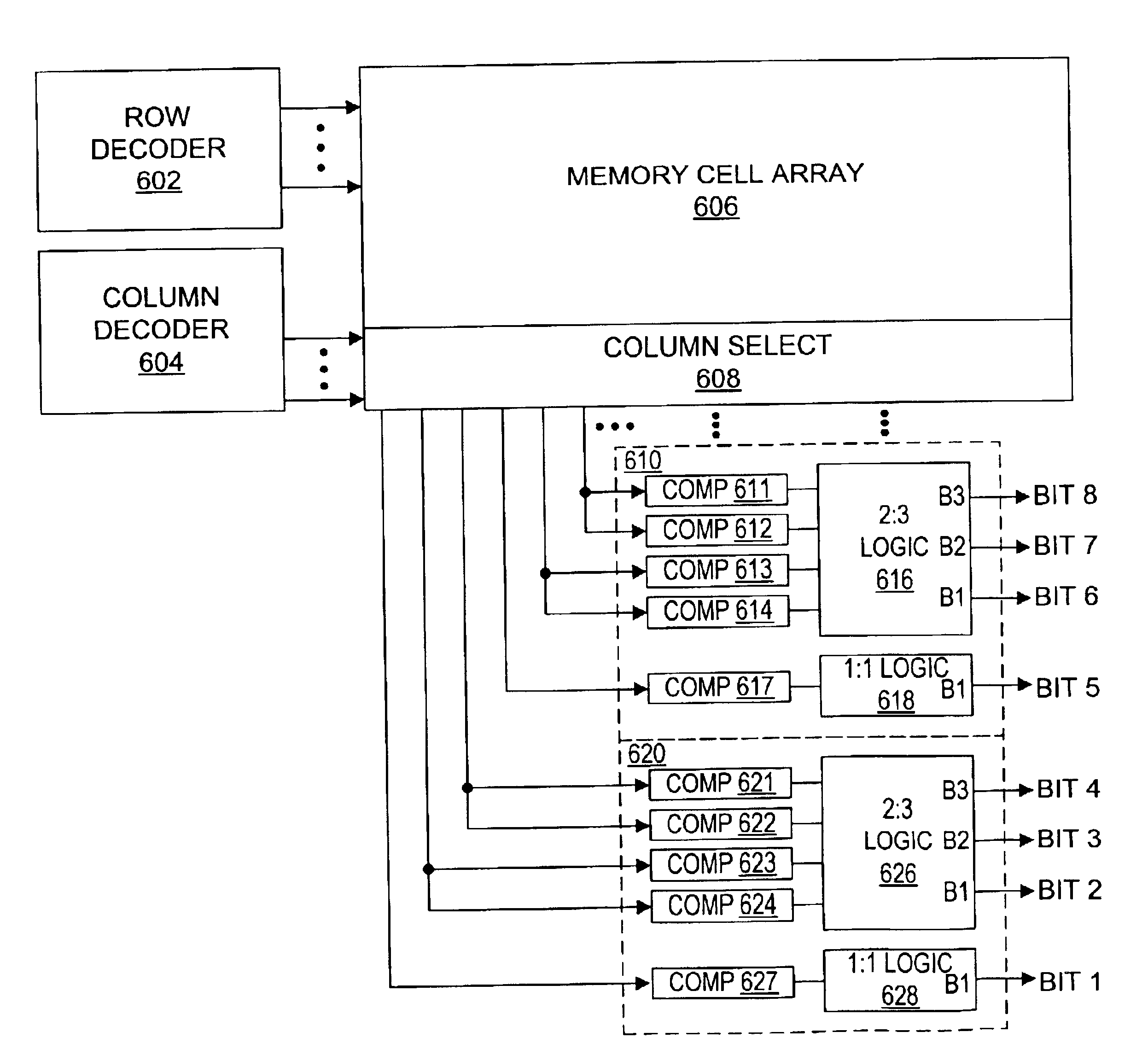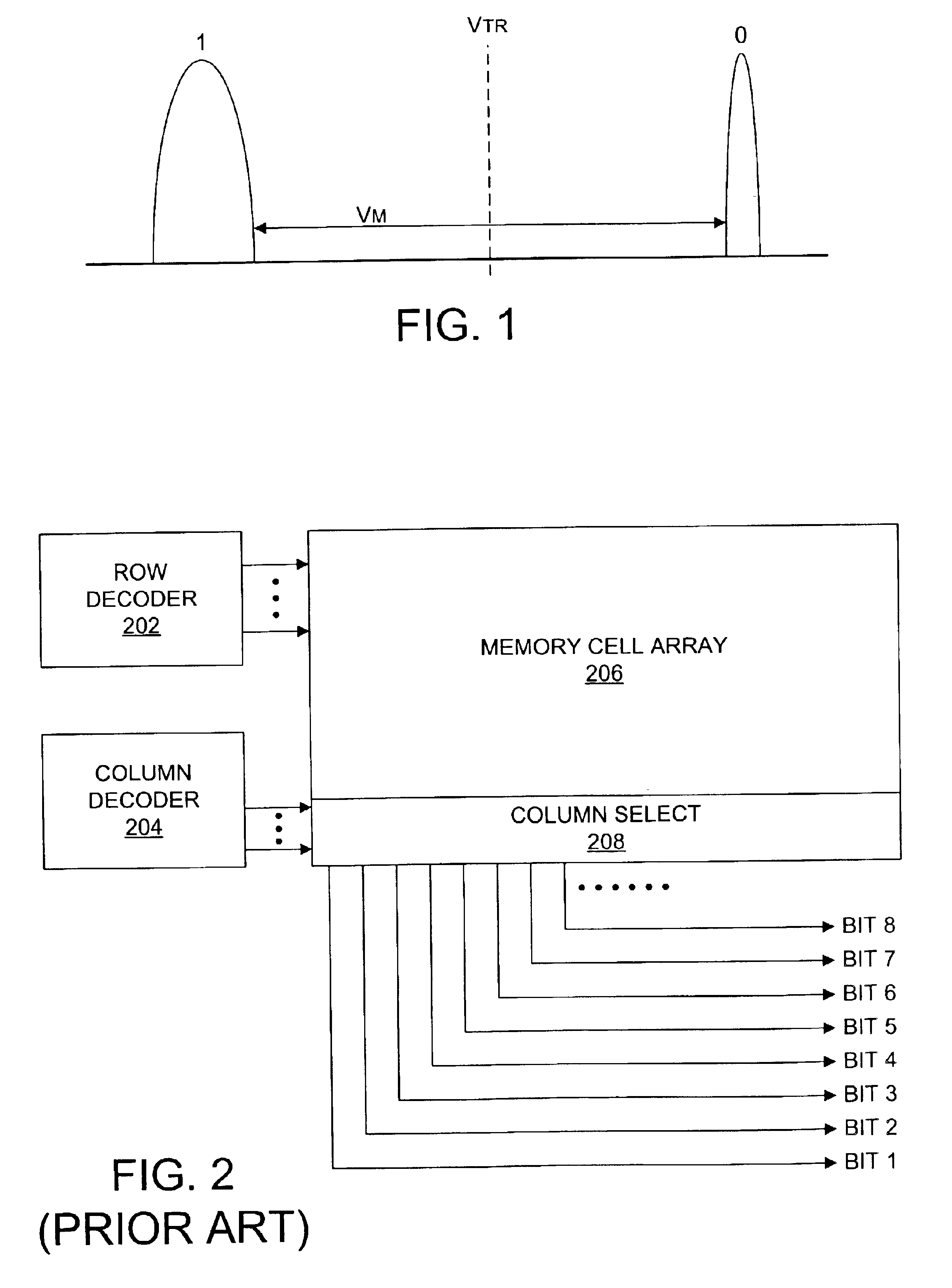Nonvolatile semiconductor memory having three-level memory cells and program and read mapping circuits therefor
a technology memory cells, which is applied in the field of nonvolatile semiconductor memory, can solve the problems of functional failure, adverse effects on the reliability of memories using four-level memory cells, and slower random access time for this type of sensing technique, so as to facilitate memory cell threshold voltage sensing, increase the voltage margin, and improve the effect of memory reliability
- Summary
- Abstract
- Description
- Claims
- Application Information
AI Technical Summary
Benefits of technology
Problems solved by technology
Method used
Image
Examples
Embodiment Construction
A memory has an array of preferably three-level memory cells, comparators for detecting the levels actually stored in selected cells, and a bit mapping circuit that maps the cells to bits using a partial function.
FIG. 5 is a graph showing an illustrative threshold voltage distribution for a three-level memory cell. The voltage margin VM between the states 0 and 1 and the states 1 and 2 is about 1.25 volts, assuming that the threshold voltage VT distribution width for state 1 is 0.5 volts, and that the threshold voltage gap between state 0 and state 2 is 3 volts. If the sensing threshold reference voltage VTRis positioned in the middle between two adjacent states, the difference between the edge of each cell's threshold voltage distribution and the sensing threshold reference voltage VTR (the “sensing margin”) is 0.625 volts.
As is apparent from a comparison of the graph of FIG. 5 with the graph of FIG. 3, the voltage margin VM of the three-level, 1.5 bit memory cell is increased rela...
PUM
 Login to View More
Login to View More Abstract
Description
Claims
Application Information
 Login to View More
Login to View More - R&D
- Intellectual Property
- Life Sciences
- Materials
- Tech Scout
- Unparalleled Data Quality
- Higher Quality Content
- 60% Fewer Hallucinations
Browse by: Latest US Patents, China's latest patents, Technical Efficacy Thesaurus, Application Domain, Technology Topic, Popular Technical Reports.
© 2025 PatSnap. All rights reserved.Legal|Privacy policy|Modern Slavery Act Transparency Statement|Sitemap|About US| Contact US: help@patsnap.com



